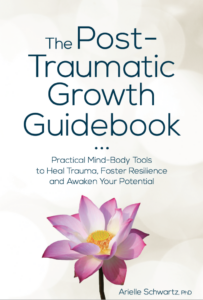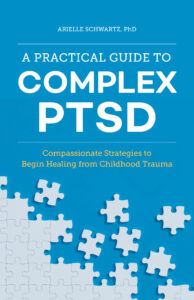When working with clients with chronic trauma I commonly hear stories of seizures, migraines, gastrointestinal problems, and autoimmune disorders. The connection between trauma and health is complex, not surprising because there is still so much to learn about our bodies. One component that has been in the news recently is the vagus nerve, an extensive nerve that is taking center stage as a potential “off switch” for disease.
I find this of interest because one’s mental health can have a significant influence on the vagus nerve. So it is no surprise that vagus nerve regulation can be important for responding effectively to the emotional and physiological symptoms of depression, anxiety, and PTSD.
“Do you have a sensitive nervous system that adversely impacts your health? By developing an understanding of the workings of your vagus nerve you may find it possible to work with your nervous system rather than feel trapped when it works against you. Fine tune your self-care with vagus nerve regulation strategies that can be practiced in the comfort of your home.“
-Dr. Arielle Schwartz
The vagus (Latin for wandering) nerve is far reaching, extending from the brainstem down into your stomach and intestines, innervating your heart and lungs, and connecting your throat and facial muscles. Furthermore, Stephen Porges’ polyvagal theory proposes that there are three evolutionary stages of the vagus nerve and that regulation of nervous system states is critical for the treatment of mental health conditions (you can read here in my blog about polyvagal theory).
Did you know that nerve fibers existing throughout your stomach and intestines are referred to as your enteric brain? That is because 90% of those nerve fibers connect back up to the brain through the vagus nerve. A key player in the body-mind connection, the vagus nerve is behind your gut instinct, the knot in your throat, and the sparkle in your smile. You can think of the vagus nerve as a two-way radio communication system helping you stay in touch with your sensations and emotions. What happens in vagus definitely doesn’t stay in vagus.
Several recent articles have discussed medical interventions that provide a potential cure for many physical and mental health conditions (wired.com; businessinsider.com, huffingtonpost.com). The vagus nerve is taking center stage as a potential “off switch” for inflammation related diseases such as epilepsy, rheumatoid arthritis, and inflammatory bowel syndrome. Regulation of the vagus nerve also plays a significant role in mental health care allowing you to effectively respond to the emotional and physiological symptoms of depression, anxiety, and PTSD.
The field of bio-electronic medicine offers Vagus Nerve Stimulation (VNS) as an intervention to treat rheumatoid arthritis, epilepsy and depression by surgically implanting tiny electronic devices that can send shocks to the vagus nerve. Further research is looking at noninvasive external devices, not yet approved by the FDA, that provides vagus nerve stimulation through the skin. The long term implications of these “electroceuticals” may provide promise for those suffering from chronic disease, depression, and PTSD.
The vagus nerve is essential for keeping your immune system in-check. There is a close connection between chronic stress, immune functioning, and inflammation. In brief, short-term activation of your sympathetic nervous system releases of cortisols and helps keep your immune system at healthy levels. Long-term stress suppresses immunity. However, chronic traumatic stress has an inverse reaction, leaving your immune system unchecked which leads to inflammation in the body (you can read more here in my blog on chronic stress and disease).
Activation of the vagus nerve keeps your immune system in check and releases an assortment of hormones and enzymes such as acetylcholine and oxytocin. This results in reductions in inflammation, improvements in memory, and feelings of relaxation. Vagus nerve stimulation has also been shown to reduce allergic reactions and tension headaches.
Regulation of the nervous system relies upon the goldilocks principle. We recognize we are “too hot” when we feel keyed up, anxious, irritable, or panicky. We are too “too cold” when we are shut down, depressed, or feeling hopeless. Sometimes we alternate between the two which is like driving with one foot on the gas and one on the brakes. Practices that regulate the vagus nerve are aimed towards either relaxing or re-energizing ourselves depending upon what is needed to feel “just right.”
Unless you have a surgically implanted device you actually cannot directly stimulate your vagus nerve; however, you can indirectly stimulate your vagus nerve to relieve keyed up or shut down nervous system states. Remember, your vagus nerve passes through your belly, diaphragm, lungs, throat, inner ear, and facial muscles. Therefore, practices that change or control the actions of these areas of the body can influence the functioning of the vagus nerve through the mind-body feedback loop. You can try these from the comfort of your living room:
Knowing practices for self-care are important. However, it is also important to know how and when to seek out professional therapeutic help. Asking for help can often be the hardest step. You do not need to walk the healing path alone.

Within The Post Traumatic Growth Guidebook, you will find an invitation to see yourself as the hero or heroine of your own life journey. A hero’s journey involves walking into the darkness on a quest for wholeness. This interactive format calls for journaling and self-reflection, with practices that guide you beyond the pain of your past and help you discover a sense of meaning and purpose in your life. Successful navigation of a hero’s journey provides opportunities to discover that you are more powerful than you had previously realized. Click here to order the book on Amazon.

As a compliment to the Complex PTSD Workbook, A Practical Guide to Complex PTSD: Compassionate Strategies for Childhood Trauma, is meant to provide compassionate support for the process of healing from childhood trauma. You can think of it as a lantern that will illuminate the dark spaces and provide a sense of hope in moments of despair. The practical strategies you will learn in this book are taken from the most effective therapeutic interventions for trauma recovery. You will learn the skills to improve your physical and mental health by attending to the painful wounds from your past without feeling flooded with overwhelming emotion. My wish is to help you discover a new sense of freedom. The traumatic events of your past no longer need to interfere with your ability to live a meaningful and satisfying life. Click here to Order on Amazon.

In The Complex PTSD Workbook, you’ll learn all about Complex PTSD Recovery and gain valuable insight into the types of symptoms associated with unresolved childhood trauma, while applying a strength-based perspective to integrate positive beliefs and behaviors. This is a great add-on with the Post Traumatic Growth Guidebook…Click here to order.
For therapists,The EMDR Therapy and Somatic Psychology book, teaches you how to integrate two of the best known trauma recovery modalities into your practice. Click to order it here and increase your toolbox for healing using this integrative and effective approach to healing.
Dr. Arielle Schwartz is a licensed clinical psychologist, wife, and mother in Boulder, CO. She offers trainings for therapists, maintains a private practice, and has passions for the outdoors, yoga, and writing. She is the developer of Resilience-Informed Therapy which applies research on trauma recovery to form a strength-based, trauma treatment model that includes Eye Movement Desensitization and Reprocessing (EMDR), somatic (body-centered) psychology and time-tested relational psychotherapy. Like Dr. Arielle Schwartz on Facebook,follow her on Linkedin and sign up for email updates to stay up to date with all her posts. Dr. Schwartz is the author of three books:

Arielle Schwartz, PhD, is a psychologist, internationally sought-out teacher, yoga instructor, and leading voice in the healing of PTSD and complex trauma. She is the author of five books, including The Complex PTSD Workbook, EMDR Therapy and Somatic Psychology, and The Post Traumatic Growth Guidebook.
Dr. Schwartz is an accomplished teacher who guides therapists in the application of EMDR, somatic psychology, parts work therapy, and mindfulness-based interventions for the treatment of trauma and complex PTSD. She guides you through a personal journey of healing in her Sounds True audio program, Trauma Recovery.
She has a depth of understanding, passion, kindness, compassion, joy, and a succinct way of speaking about very complex topics. She is the founder of the Center for Resilience Informed Therapy in Boulder, Colorado where she maintains a private practice providing psychotherapy, supervision, and consultation. Dr. Schwartz believes that that the journey of trauma recovery is an awakening of the spiritual heart.